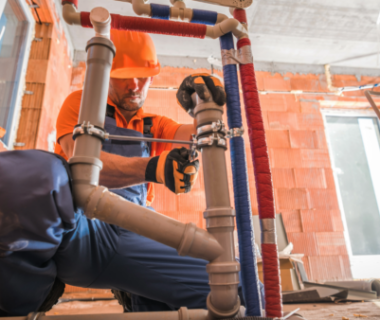How to Install Sink Drain Pipes

When you are building a new house, special attention should be paid to the plumbing system. It is very important to have effective plumbing as it takes care of all the water coming in and going out of the house. It is also essential for water distribution in the kitchen and bathrooms. Before moving into a new house, it must be made sure that there are no leaks in the plumbing system as it may cause trouble in the long run. Sink drain pipes often tend to develop leaks if the plumbing system is faulty and they must be replaced immediately.
Sink drain pipes can be easily installed if you are familiar with some basic plumbing techniques. Usually PVC pipes are used for drains but if the pipes are visible then chrome can be used, as it looks more appealing than PVC. PVC is resistant to corrosion and is not affected by the change in the levels of acidity of the water. On the other hand, pipes made of brass tend to corrode over time.
Sink Drain Pipes – Equipment Required:
The equipment required for installing sink drainpipes includes drainpipes, drain stopper, screwdrivers, plumbers putty and pliers.
Sink Drain Pipes – Installation Method:
Before installing a sink drain pipe, make sure you have a P-trap because S-traps are not recommended. They tend to lose the watertight seals with the passage of time and may develop leaks. Take some Plumbers Putty that is a pliable clay-like material for making watertight seals. Put the putty under the drain flange and place in into the hole. Use a gasket and nut to tighten the assembly. A gasket is a mechanical seal that prevents leakages. Tighten the nut using a screwdriver. Put a stopper and then insert the tail piece in a way that the opening containing the ball and linkage should face the wall.
Now insert the P-trap in a manner that it is at level with the insertion point in the wall as well as with the tail piece. Use additional length of pipe if it is required. Put a nut on the tail piece as well as the P-trap and tighten both. Tighten the female adapter of the drain stub in the wall and insert the P-trap into it. Tighten the nuts on the P-trap and tail piece after insertion but make sure you do not over-tighten them. It is better to hand-tighten them if possible rather than using pliers. Once you have installed the assembly, check for any leakages. If found, loosen the fittings and tighten them again after repositioning.
When installing sink drain pipes, it must be kept in mind that the connections should be secure and the parts must be clamped tightly to avoid any leakage. However, avoid over tightening as it may cause the pipe to burst due to pressure. Gaskets should be used to make the fittings watertight. Additionally, plumbers putty is also an effective material for creating watertight seals.
Let Dr. Pipe Drain and Plumbing Solve Your Plumbing Problems
Dr. Pipe is fully insured and licensed. With many years of experience serving our clients in Ontario, we’ve built a clean reputation. Our workers are also both certified and experienced. Therefore, you can trust us to do it right the first time.



